Text
THE ENTIRE WEST IS BEING PUT UP FOR SALE AND I AM BEGGING YOU TO CALL YOUR SENATORS

Trump’s budget bill has many, many things in it, but buried amongst it is the MILLIONS OF ACRES OF PUBLIC LAND FOR SALE.
This is the entirety of the Arizona state forests, the entire Cascades mountain range. Swathes of pristine desert around the national parks in Utah. On the doorstep of Jackson Hole.
THIS BILL IS BIG, BUT IT CAN BE AMENDED AND ABSOLUTELY MUST NOT PASS AS IS please.
If you have ever enjoyed the wilderness, we stand to lose it all forever.
CALLING your senators - NOT JUST IN THE WEST. ALL SENATORS, is CRUCIAL.
Outdoor alliance has a great resource for reaching out.
I don’t have a huge following but please, everywhere I have ever loved, the forests I grew up playing in, the land I got married on, is all at risk and I am begging.
50K notes
·
View notes
Text

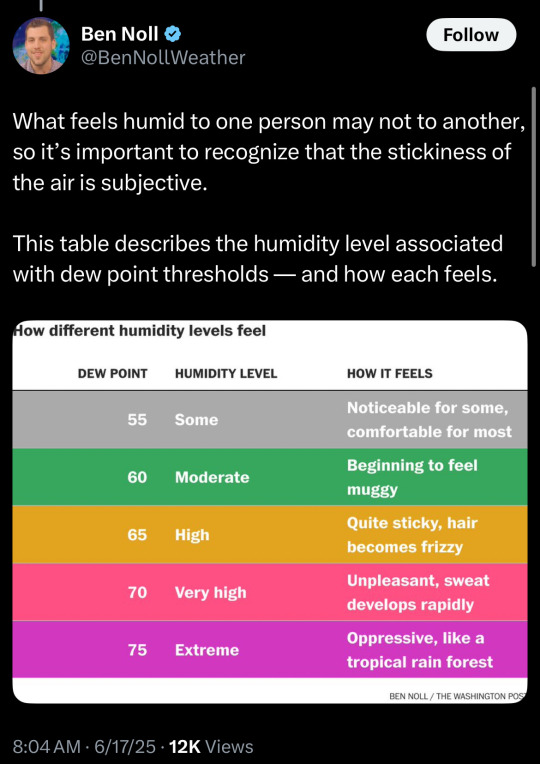



y'all it's about to get really fucking humid and hot
53K notes
·
View notes
Text

PROTEI: 10 YEARS SINCE THE SPACE LEAP
A postcard from the universe of total decay showing a totally realistic and not at all impossible megastructure that made electricity free for the entire planet
It's an array of solar panels that loop around Protei and beam energy to the surface using microwaves. I think something akin to that has actually been proposed in real life, but it's obviously somewhat impractical. In UoTD, however, it was (or will be more accurately) actually constructed due to differences in material science and the political conjucture
77 notes
·
View notes
Text
COMMISSIONS OPEN!!!
Get your spec bio and wing art here! Details on KO-FI







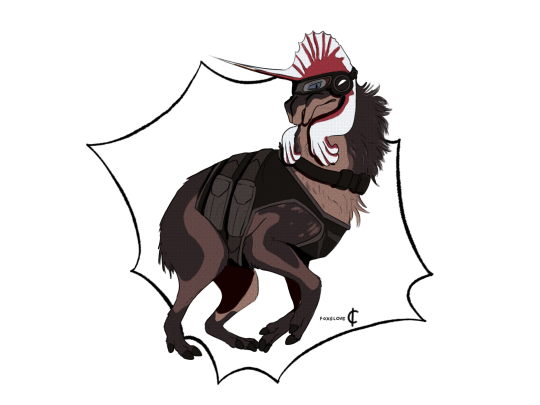
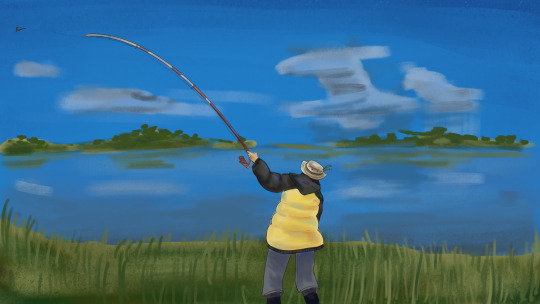



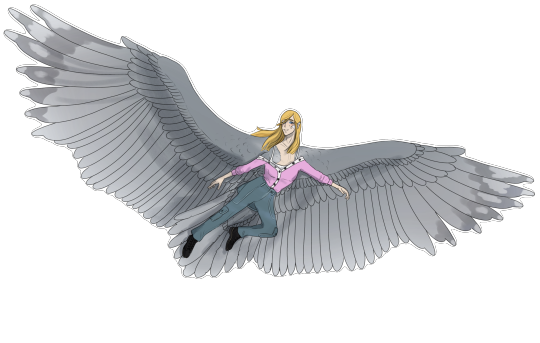





7 notes
·
View notes
Text

a piece about nuclear war
130 notes
·
View notes
Photo

2025 May 11
The Surface of Venus from Venera 14 Image Credit: Soviet Planetary Exploration Program, Venera 14; Processing & Copyright: Donald Mitchell & Michael Carroll (used with permission)
Explanation: If you could stand on Venus – what would you see? Pictured is the view from Venera 14, a robotic Soviet lander which parachuted and air-braked down through the thick Venusian atmosphere in March of 1982. The desolate landscape it saw included flat rocks, vast empty terrain, and a featureless sky above Phoebe Regio near Venus’ equator. On the lower left is the spacecraft’s penetrometer used to make scientific measurements, while the light piece on the right is part of an ejected lens-cap. Enduring temperatures near 450 degrees Celsius and pressures 75 times that on Earth, the hardened Venera spacecraft lasted only about an hour. Although data from Venera 14 was beamed across the inner Solar System over 40 years ago, digital processing and merging of Venera’s unusual images continues even today. Recent analyses of infrared measurements taken by ESA���s orbiting Venus Express spacecraft indicate that active volcanoes may currently exist on Venus.
∞ Source: apod.nasa.gov/apod/ap250511.html
114 notes
·
View notes
Text
After several months of the charity zine I ran with my partner is finally love on itch.io!
Proceeds of the book goes to Securing Safe Food, an organization that works with food banks to make sure that people with dietary restrictions are able to access food they are safe to eat!
Art and recipes from furries from all over including guest chef Sera Proto and guest artist Anna Klava
32 notes
·
View notes
Text
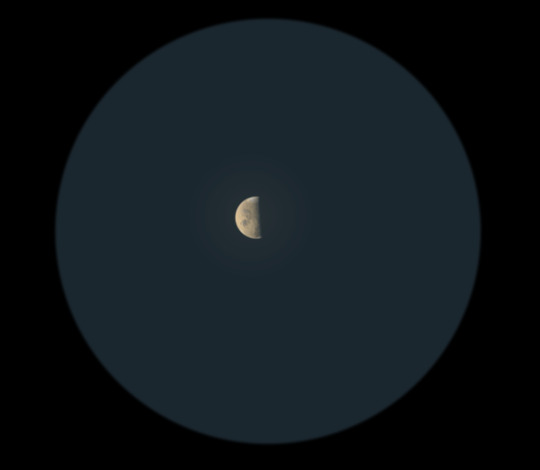
Telescopic view of Omen's satellite Rival, as seen during the peak of the Omen apparition.
Rival is the most distant Ominous Planet. It's named Rival since, during Omen apparitions, its brightness and ruddy color rivals that of the brilliant red giant star Rodocer*. It's smaller than Oldsky and Gymnome, but its apparently rocky composition indicates it's most likely a captured Primary Planet like Oldsky, although it does orbit prograde. The gentle capture of not just one but two major primary planets raises questions about whether Rival really is a captured satellite, or if it was formed around Omen and somehow survived the capture of Oldsky. Rival appears to be a dry desert planet with a very thin atmosphere, but glints of sunlight reflecting off of dark flat regions indicate that some of its craters might have liquid water.
*this is continuity with KSP mod whirligig world. In the 'real' mellanus/gymnome worldbuilding, the star is probably called something else!
up-close shots: (spoilers for the mod!)




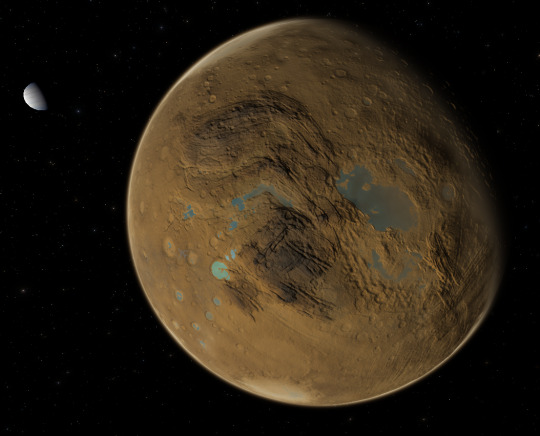



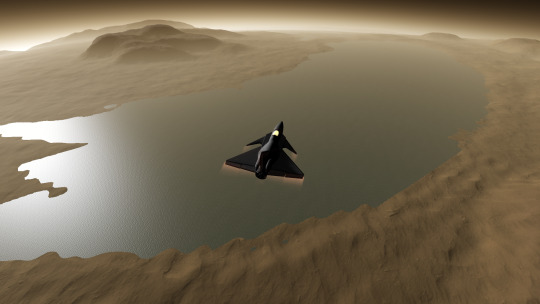

12 notes
·
View notes
Text

A Visit To Paradise
An early birthday gift for @luxudus! In this little painting, a comet pays a visit to his world, Vuvlaiu!
Keep your eyes peeled in the next few weeks; I'm working on a new commission sheet, as well as a few other fun paintings. In the middle of moving, so progress may be a little slow, but I'm hard at work when I get the time!
As always, image ID will be in the reblogs and in the alt text. :)
#my art#again don’t worry i still work on my novel stuff#mainly been working on timeline stuff in between art lol
48 notes
·
View notes
Text

Gravel Pit 4
1K notes
·
View notes
Text
"Wah this section of worldbuilding I'm doing is so minute and kinda pointless to the larger scheme of things, hurr durr I'm just focusing on some whatever part when I have actual story and plot to figure out-" WHO CARES. YOU ARE THE GOD OF YOUR UNIVERSE. HAVE FUN CREATING IT.
2K notes
·
View notes
Text
would be fun if for once characters in a scifi story landed on a planet and it was like desert or whatever and theyre like ooh... a desert world.... and the people who live there are like what? no? this is just a desert. planets are very big. they have multiple biomes
33K notes
·
View notes
Text
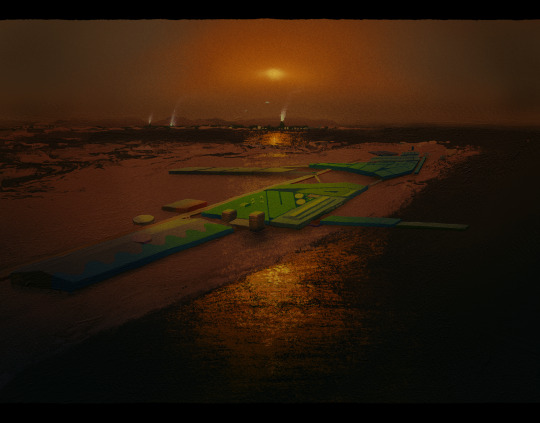
Lunine Beach, a sleepy seaside town on the shores of Kraken Mare - a sea of liquid hydrocarbons at the north pole of Titan, largest of Saturn's retinue of icy moons.
#this is so cooollll oh my god#i love all the worldbuilding & art you do!!!#others art#keep up the lovely work!!!
45 notes
·
View notes
Text

Hello, everyone! Thank you so much for your patience between pieces of art; it's been a hectic year!
This piece is gift art for @whirligig-girl, who has been an invaluable help to me as I progress in getting my art skills up to snuff. I’m very grateful for her help, so go give her a follow!
I have another two pieces I’m currently working on, with differing levels of complexity. The one is a study, and a very large one at that. The other is a simple system comparison of my novel’s system and our own, inspired by a scale comparison piece by Luna. That one will most likely be done first, while the study will take a lot more time. I cannot stress this enough, it is a very big piece!
Also, to those who are interested, commissions in this style are open; I’m moving soon, and I really need to start raising funds for things. That, and my senior cat has been plagued by all kinds of medical maladies so far this year, and I’d like to help my sibling out with all the bills. So, if you’re interested, you can check out my ko-fi here for more details!
Thanks again for your patience, and I hope you have a great day!
As always, it has an image ID, and will have one in the reblogs as well. :)
#my art#just an update since i haven't posted much in relation to my blog here :)#slowly getting the energy to work on projects again & will probably do more art of my stuff first before getting back into writing
45 notes
·
View notes
Text
iof shut down the gaza border again, cutting it off from aid, again. the cost of daily living will likely rise again. please donate to the people working to make things a little more equitable in the face of death:
the sameer project
workshops4gaza (workshops/bookstore, proceeds go to the sameer project)
8K notes
·
View notes
Text
We have 30 days until the National Environmental Policy Act (NEPA) laws are rescinded. This is the 50-year bedrock of American conservation. Normally, these actions take years but the administration has provided 30 days for public comment gutting clean water and clean air. Drop what you’re doing, before you make any more calls or read any more social media posts, please populate the Federal Register with dissent.
A. Go to https://www.federalregister.gov/documents/2025/02/25/2025-03014/removal-of-national-environmental-policy-act-implementing-regulations
B. Click on the green rectangle in the upper right corner ("SUBMIT A PUBLIC COMMENT") .
C. Fill in your comment, and info at the bottom, and SUBMIT COMMENT.
51K notes
·
View notes





